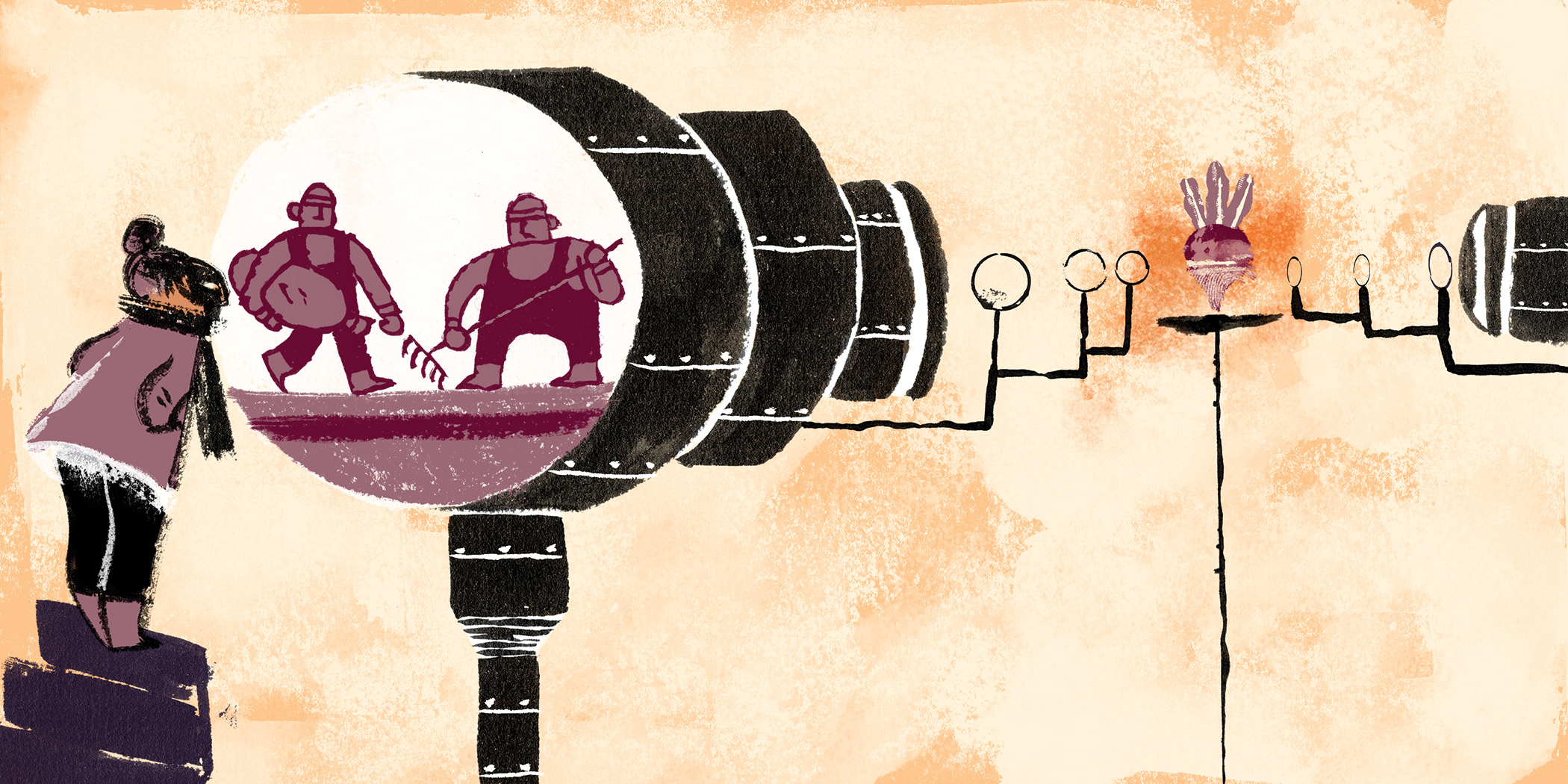The Hands Behind Our Harvest
by Stephanie Dorenbosch
We are lucky to have a vibrant and diverse community of stakeholders in Eastern Pennsylvania working to improve many aspects of our food systems, including groups working on local and seasonal food sourcing, sustainable production and food access in underserved communities. In addition, consumers have recently become more conscientious, and businesses have changed their practices and marketing in response. Locally and across the country, farmers markets and community-supported agriculture (CSA) programs have exploded in popularity, as have the availability and visibility of local and organic food.
But one link in the food production chain is consistently overlooked: our treatment of the agricultural workers who pick, pack and process our food. Unfortunately, focusing only on organic and local designations does not guarantee that the workers on those farms are being treated humanely. Even for consumers and buyers who are otherwise well-informed about sustainability issues, farmworkers remain the hidden link in the food supply chain.
Somewhere from 2 million to 3 million men, women and children work in the fields in the United States. Estimates vary, but it’s likely that between 50 and 85 percent of our fruits and vegetables are picked by hand. With an average annual income of only $11,000, farmworkers are the second lowest-paid workforce in the United States, yet agriculture is consistently ranked by OSHA as one of the top three most dangerous industries. According to the U.S. Department of Labor Statistics, the workplace fatality rate for agriculture workers in 2011 was seven times higher than the overall rate in private industry.
These conditions are no accident; they are a direct result of national and state policies whose roots are centuries old. Our agricultural economy was originally built on the backs of the slaves who were forced to provide both free labor and political weight to their owners. Later, Southern representatives in Congress insisted on excluding farm laborers and domestic workers—roles largely still held by black workers—from labor protections in exchange for their votes on New Deal legislation.
Today, the demographics have changed, but the exemptions from legal protections persist. Farmworkers in the U.S. today are largely of a different demographic; the National Agricultural Workers Survey shows that more than 75 percent were born outside of the country, mostly in Latin America. Somewhere between 50 and 75 percent of them are unauthorized immigrants. Due to their work in the agriculture industry—and not due to their immigration status, it’s worth noting—these workers are exempted from some of our most basic labor laws, including the right to overtime pay and in some cases even minimum wage, as well as protection from discrimination and harassment, health and safety requirements, and the right to organize to improve their work conditions.
Despite all this, we still see potential to raise up farmworkers and the growers they work for beyond these frankly abysmal minimum legal requirements. In a food market increasingly shaped by conscious consumerism, workers, shoppers, growers and retailers have room to get creative about improving pay and work conditions all along the food chain.
Raising awareness about questionable working conditions and rewarding responsible growers can put us on the right path. In Florida, the Coalition of Immokalee Workers’ Fair Food Program campaign, which relied largely on public awareness and market pressure, has resulted in 90 percent of Florida tomatoes being grown and harvested under vastly improved labor conditions.
In Pennsylvania, we have found that many consumers and organizations are interested in workers’ issues, but few know how to get involved. Since this movement is still just nascent locally, we need to start by simply beginning to talk about it.
For example, co-ops and natural foods markets in Philadelphia advertise their relationships with the farmers they source from. Ask your local store if they use criteria that include working conditions when making their buying decisions. Do they source from growers who are certified by the Agricultural Justice Project or Food Justice Certified programs? Does your favorite farm-to-table restaurant ask that a fair wage is paid to the farmworkers when a fair price is paid to the farmers (and does the restaurant pay a living wage to its own employees)?
You can also talk about it with growers at farmers markets and CSAs. Do they have any particular practices with their employees that go above and beyond that of their neighbors and competitors? Have they ever considered marketing something like that as a value-add to their customers, in the same way they often market their treatment of animals and their chemical-free policies?
Finally, talk about it anywhere that food and sustainability is discussed. Remind your friends and family that fair treatment of workers is a necessary part of any sustainable food system. Invite someone from Friends of Farmworkers, CATA (the Farmworker Support Committee) or the Coalition of Immokalee Workers to speak at your next food- or sustainability-themed event.
We do not have to sit back and wait for the laws to change to improve our food systems. As we have already done with the way farm animals are treated and the way chemicals and pesticides are used, we can ask our suppliers to do better for the people working for them.
Stephanie Dorenbosch is a staff attorney at Friends of Farmworkers Inc.



